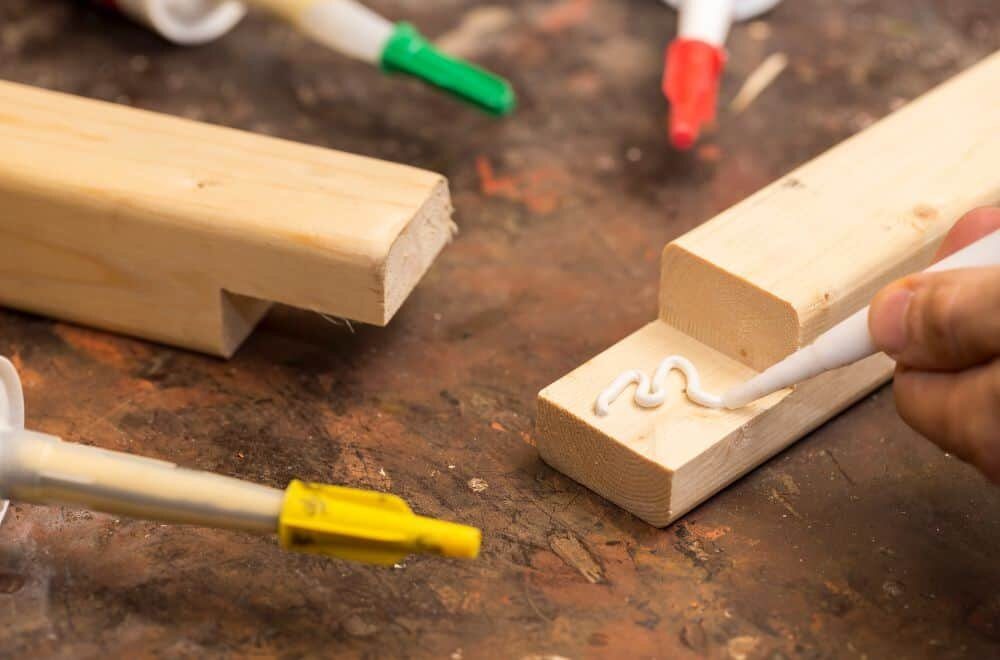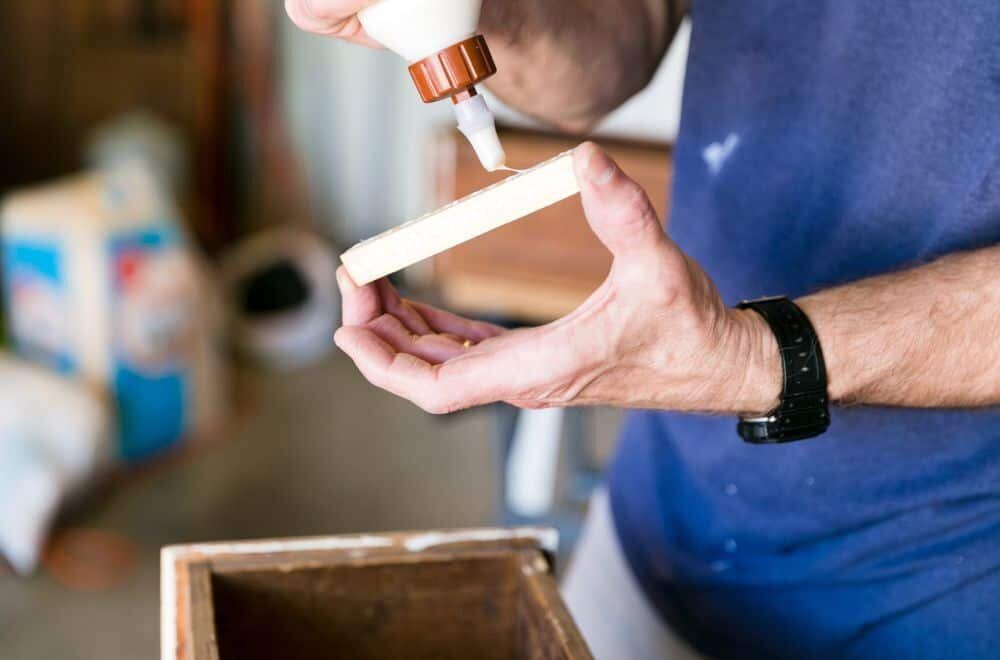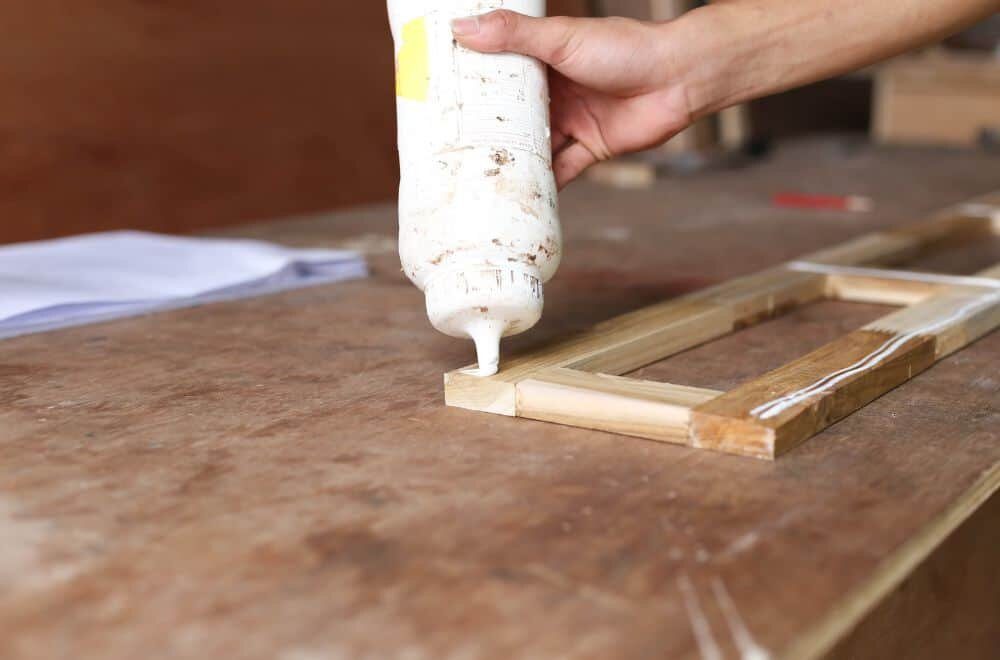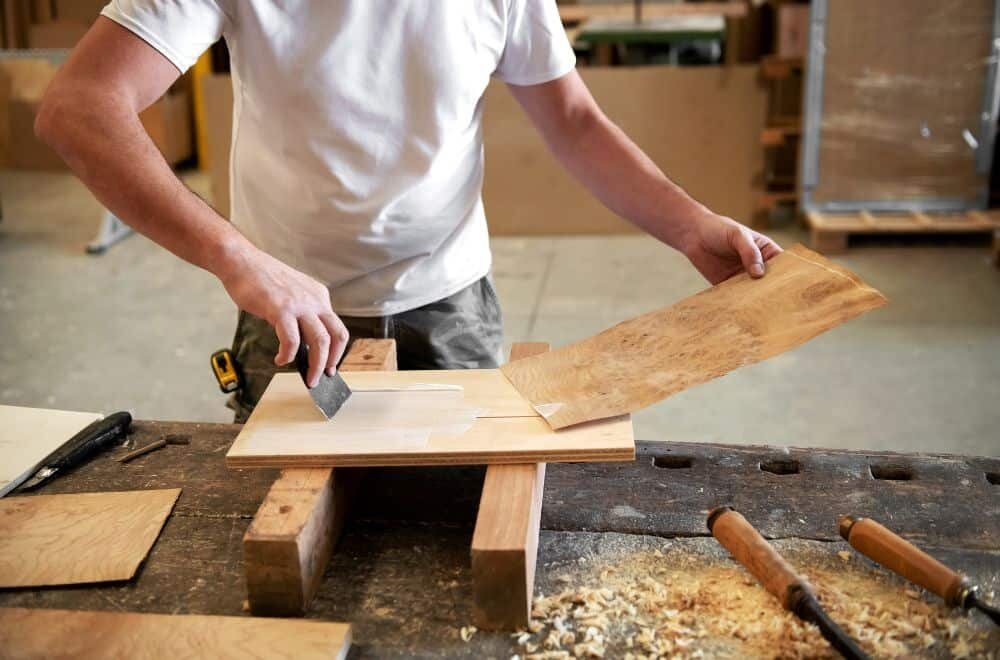Are you wondering if super glue will work on wood? The answer is yes, super glue can be used on wood for a variety of projects. However, it’s important to keep in mind that not all types of wood will bond well with super glue, and there are some best practices to follow to ensure a strong and lasting bond.
Super glue, also known as cyanoacrylate glue, is a fast-drying adhesive that can bond quickly and securely to a variety of materials, including wood. It’s a popular choice for DIY projects and small repairs because of its ease of use and ability to bond quickly. However, when using super glue on wood, it’s important to choose the right type of glue and to prepare the wood surface properly to ensure a strong bond.
Understanding Super Glue
Super glue, also known as cyanoacrylate glue, is a fast-drying adhesive that can be used on a variety of surfaces, including wood. It is a popular choice for DIY projects because it is easy to use and creates a strong bond quickly.
When using super glue on wood, it is important to understand how it works. Super glue works by creating a chemical reaction with moisture. This means that the glue will dry faster in humid environments. If you are working in a dry environment, you may need to add a small amount of water to the wood to help the glue bond properly.
Super glue is not recommended for use on large surfaces or load-bearing joints. It is best used for small projects or for attaching small pieces of wood together. For larger projects, it is recommended to use wood glue or another type of adhesive that is designed for use on wood.
It is important to note that super glue can be difficult to remove if it gets on your skin or other surfaces. To avoid this, it is recommended to wear gloves and work in a well-ventilated area.
Overall, super glue can be a useful tool for woodworking projects, but it is important to understand its limitations and use it appropriately.
Basics of Wood Material

When it comes to woodworking, understanding the basics of wood material is essential. Wood is a natural material that comes in different types, each with its unique characteristics. Here are some of the basics you need to know:
Types of Wood
There are two main types of wood: hardwood and softwood. Hardwood comes from deciduous trees like oak and maple, while softwood comes from coniferous trees like pine and spruce. Hardwood is generally more expensive than softwood, but it’s also more durable and has a more attractive appearance.
Wood Grain
The grain of wood refers to the pattern of lines and fibers on the surface of the wood. The grain can be straight, wavy, or curly, depending on the type of wood. Understanding the grain is important when cutting and shaping wood, as it affects the strength and appearance of the final product.
Moisture Content
The moisture content of wood refers to the amount of water in the wood. Wood that is too dry or too wet can cause problems when working with it. For example, wood that is too dry can split and crack, while wood that is too wet can shrink and warp.
Wood Density
The density of wood refers to how much it weighs per unit of volume. Dense woods like oak and maple are harder and more durable than less dense woods like pine and spruce. The density of wood also affects its ability to hold screws and nails.
By understanding the basics of wood material, you can choose the right type of wood for your project and work with it effectively.
Super Glue on Wood: Does it Work?

Super glue, also known as cyanoacrylate, is a fast-acting adhesive that can bond almost anything together. But does it work on wood? The answer is yes, super glue can be used on wood, but it’s important to understand its limitations.
When using super glue on wood, it’s important to note that it works best on small pieces of wood and not on large surfaces. It’s also not recommended for use on wood that will be exposed to water or other liquids, as the bond may weaken over time.
One of the benefits of using super glue on wood is that it dries quickly, making it ideal for small repairs or projects. It can also be mixed with sawdust to create a custom gap-filling paste for holes and grooves in wooden blocks or pieces of wood.
To ensure a strong bond, it’s important to prepare the surface of the wood before applying the super glue. The surface should be clean and dry, free of any dirt, dust, or debris. Sanding the surface can also help improve the bond.
In summary, super glue can be used on wood, but it’s important to keep in mind its limitations. It’s best used for small repairs or projects and should not be used on wood that will be exposed to water or other liquids. With proper preparation and application, super glue can be a useful tool in your woodworking arsenal.
Factors Influencing Super Glue Effectiveness

When it comes to bonding wood with super glue, there are several factors that can impact its effectiveness. Here are some of the key things to consider:
Surface Preparation
Before applying super glue to wood, it’s important to ensure that the surface is clean and dry. Any dirt, dust, or moisture on the surface can interfere with the bonding process and weaken the bond. You can use a clean cloth or paper towel to wipe down the surface and remove any debris. If the wood is particularly dirty or greasy, you may need to use a mild detergent to clean it.
Type of Wood
The type of wood you’re working with can also affect the effectiveness of super glue. Some woods, such as oak and maple, are very dense and can be difficult to bond with super glue. Other woods, like pine and cedar, are more porous and may absorb the glue more readily. In general, softer woods tend to bond better with super glue than harder woods.
Joint Design
The design of the joint you’re trying to create can also impact the effectiveness of super glue. Super glue works best when the joint is tight-fitting and there are no gaps between the pieces of wood. If there are gaps, the glue may not be able to penetrate the wood and create a strong bond. In some cases, you may need to use clamps or other tools to hold the pieces of wood together while the glue dries.
Temperature and Humidity
Temperature and humidity can also affect the bonding process. Super glue works best in warm, dry conditions. If the temperature is too cold or the humidity is too high, the glue may take longer to dry or may not bond as strongly. You may need to wait longer for the glue to dry or use a different adhesive if the conditions are not ideal.
By taking these factors into consideration, you can increase the effectiveness of super glue when bonding wood. Keep in mind that super glue is not always the best choice for every project, so be sure to consider the specific needs of your project before choosing an adhesive.
Ideal Conditions for Using Super Glue on Wood

When using super glue on wood, there are certain conditions that need to be met to ensure a strong bond. Here are some ideal conditions for using super glue on wood:
Clean and Dry Surface
Before applying super glue, make sure the surface of the wood is clean and dry. Any dirt, dust, or moisture can weaken the bond between the glue and the wood. Use a clean cloth to wipe the surface and let it dry completely before applying the glue.
Smooth Surface
Super glue works best on smooth surfaces. If the surface of the wood is rough or uneven, the glue may not adhere properly. Sand the surface of the wood to make it smooth before applying the glue.
Proper Amount of Glue
Using too little or too much glue can affect the strength of the bond. Apply a thin layer of glue to one surface and press the two surfaces together firmly. Avoid using too much pressure as it can cause the glue to spread out and weaken the bond.
Ideal Temperature and Humidity
Super glue works best at room temperature and in low humidity conditions. High humidity can cause the glue to cure too quickly, while low humidity can cause it to take longer to cure. Avoid using super glue in extreme temperatures or humidity levels.
Use with Caution
Super glue can be harmful if it comes in contact with skin or eyes. Use with caution and wear gloves to protect your skin. If the glue gets on your skin, wash it off immediately with soap and water. If it gets in your eyes, seek medical attention immediately.
By following these ideal conditions, you can ensure a strong bond between super glue and wood.
Alternatives to Super Glue for Wood

While super glue can be a quick fix for bonding wood, it may not always be the best option. Here are some alternatives to consider:
Wood Glue
Wood glue is specifically designed for woodworking projects and is a great alternative to super glue. It creates a strong bond between two pieces of wood and dries clear, making it perfect for furniture repairs or other woodworking projects. Plus, it’s easy to sand and paint over once it’s dry.
Epoxy Glue
Epoxy glue is a two-part adhesive that creates a very strong and permanent bond. It’s perfect for bonding wood to other materials and can also be used for filling in gaps or cracks in wood. However, it takes longer to dry than super glue or wood glue, so be prepared to wait a bit before moving on to the next step of your project.
Construction Adhesive
Construction adhesive is a heavy-duty adhesive that can be used for bonding wood to other materials, such as metal or concrete. It creates a strong and permanent bond and is ideal for projects that require a lot of strength and durability. However, it’s not as easy to work with as wood glue or super glue, so make sure you have some experience working with adhesives before using it.
PVA Glue
PVA glue works similarly to wood glue and is great for bonding wood to wood. It’s easy to work with, dries clear, and can be sanded and painted over once it’s dry. However, it’s not as strong as some of the other alternatives listed above, so it may not be the best option for heavy-duty projects.
Overall, there are many alternatives to super glue for bonding wood. Consider the strength, drying time, and ease of use when choosing the right adhesive for your project.
Safety Measures When Using Super Glue on Wood

When using super glue on wood, it is important to take some safety measures to avoid accidents and ensure the best results. Here are some tips to help you use super glue safely on wood:
1. Wear Protective Gear
Super glue is a strong adhesive that can bond skin and other surfaces together. To avoid accidentally gluing your fingers or other body parts together, it is recommended to wear protective gear such as gloves and safety glasses.
2. Work in a Well-Ventilated Area
Super glue fumes can be harmful if inhaled. To avoid any respiratory problems, it is important to work in a well-ventilated area. Open windows or turn on a fan to circulate the air in the room.
3. Avoid Contact with Skin
If super glue comes in contact with your skin, it can cause irritation or even burn your skin. If this happens, do not try to pull the skin apart, as it can cause more damage. Instead, soak the affected area in warm soapy water and gently peel the skin apart.
4. Use the Right Amount of Glue
Using too much or too little glue can affect the bonding strength and the appearance of the final product. Use a small amount of glue and apply it evenly on the surface to be bonded.
5. Store Super Glue Properly
Super glue can dry out quickly if not stored properly. Keep the glue in a cool, dry place and tightly close the lid after each use.
By following these safety measures, you can use super glue on wood safely and achieve the best results.
Tips for Applying Super Glue on Wood
When applying super glue on wood, there are a few tips you should keep in mind to ensure a successful bond. Here are some tips to help you get the best results:
- Clean the surface: Before applying the super glue, make sure the surfaces are clean and free of any dirt, dust, or debris. This will help the glue to bond better and create a stronger hold.
- Apply the glue sparingly: Super glue is a very strong adhesive, and a little goes a long way. Apply the glue sparingly to avoid any excess glue that could drip or seep out of the joint.
- Use clamps or weights: Super glue bonds quickly, but it takes a little time to fully cure. To ensure a strong bond, use clamps or weights to hold the joint in place until the glue is completely cured.
- Avoid gaps: Super glue works best when the surfaces are in tight contact with each other. Avoid any gaps between the pieces you are attaching, as this could cause the joint to fail.
- Mix with sawdust: If you need to fill gaps or holes in the wood, mix the super glue with sawdust to create a wood filler. This will help to fill in any gaps and create a stronger bond.
By following these tips, you can ensure that your super glue bonds to wood properly and creates a strong hold.
Frequently Asked Questions
Can I use super glue on wood trim?
Yes, you can use super glue on wood trim. Super glue is a great adhesive for small repairs on wood trim. However, if you need to bond large pieces of wood trim, you may want to consider a different type of adhesive.
What is the best glue for wood to wood?
The best glue for wood to wood depends on the project. For most woodworking projects, carpenter’s glue is the best choice. It has a strong bond and dries clear. However, if you need a fast-drying adhesive, super glue may be a better option.
How does Gorilla Wood Glue compare to super glue for wood?
Gorilla Wood Glue is a type of carpenter’s glue that is designed specifically for woodworking projects. It has a strong bond and dries clear. Super glue, on the other hand, is a fast-drying adhesive that can be used for small repairs on wood. While both adhesives are effective, Gorilla Wood Glue is a better choice for most woodworking projects.
What is the best super glue for wood?
The best super glue for wood is a cyanoacrylate-based adhesive. It is fast-drying and provides a strong bond. Look for a super glue that is specifically designed for wood, as these adhesives are formulated to bond with the unique properties of wood.
How long does super glue last on wood?
Super glue can last for years on wood if it is applied correctly. However, the exact lifespan of the adhesive will depend on a variety of factors, including the amount of glue used, the type of wood, and the conditions the wood is exposed to.
Is super glue permanent on wood?
Super glue is a permanent adhesive that forms a strong bond with wood. However, it is important to note that super glue is not a good choice for all woodworking projects. For large projects, carpenter’s glue or other types of adhesives may be a better choice.